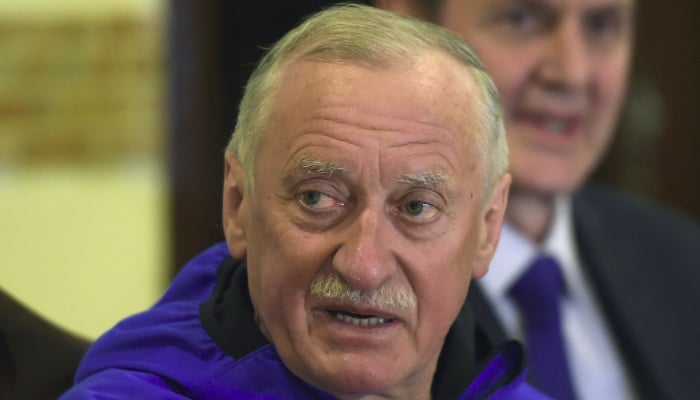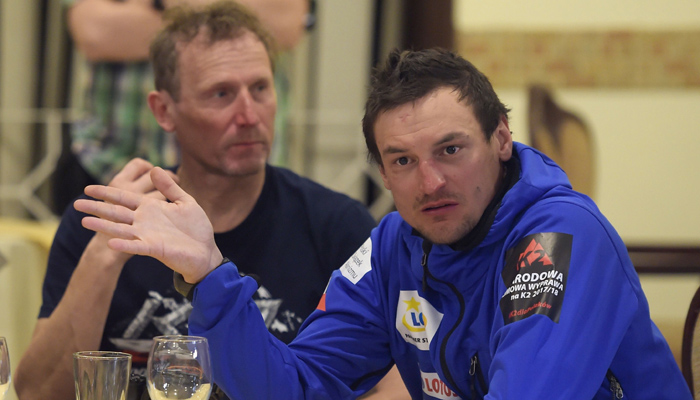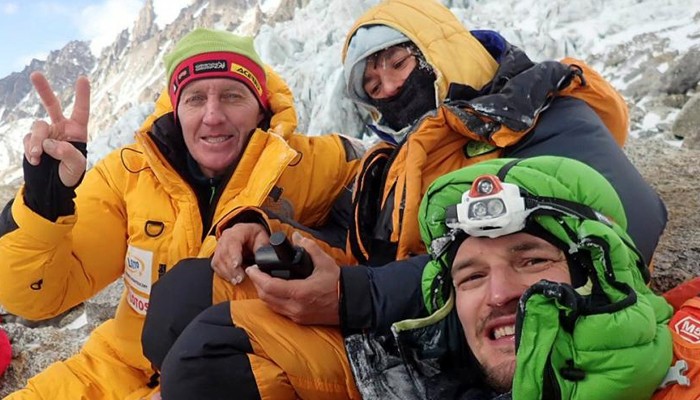ISLAMABAD: Pummelled by weeks of hurricane-force blizzards and sub-zero temperatures — not to mention high-altitude disputes — the elite climbers known as Poland´s Ice Warriors gave in: K2 remains unclimbed in winter, one of mountaineering´s final frontiers.
The high profile Polish expedition arrived in Islamabad on Friday to tell of their defeat by the Pakistani mountain — the world´s second highest peak, which is widely seen as a more difficult and deadly challenge than the tallest, Mount Everest.
It is the only one of the so-called eight-thousanders — the 14 mountains on the planet that are taller than 8,000 metres — that has not yet been summited in winter.
But the Poles´ ambitious — and expensive — expedition was troubled from the start by disputes over routes, interrupted by a high-profile rescue on another mountain, and even afflicted by disagreements over the definition of ‘winter’, the team revealed.
“So time passed,” said team leader Krzysztof Wielicki, the 68-year-old patriarch of Polish climbing, “and we had to decide to finish the expedition”.

It was first summited in 1954. Since then, just 306 people have made it to the top, while 80 have died trying, according to the 8000ers website.
Besides being technically difficult to climb, weather conditions on the peak are notorious. Further north than the Himalayas, it is battered by the full force of jet streams, Wielecki explained — currents of air at high altitudes that are so strong airplanes have trouble flying against them.
“K2 is the most difficult… in winter especially,” he said. “The worst weather is on K2.”
No winter lasts forever
The 13-member team — including their strongest climbers Adam Bielecki, a 34-year-old psychologist living in Krakow, and Denis Urubko, a Russian-Polish speed climbing specialist aged 44 — arrived at K2 base camp in January.
The team chose the Cesen route, a shorter but much steeper climb to the summit than the more commonly used Abruzzi Spur.
It would prove to be their undoing, Wielecki admitted. In winter the rockfalls on the Cesen route are constant, and stones rained down on the team as they struggled to fix ropes.

One hit Bielecki in the face, gashing his forehead and breaking his nose, while another broke a team member´s arm.
In late January Bielecki and Urubko rushed to Nanga Parbat, another Pakistani eight-thousander, to carry out a daring night-time rescue of stranded French mountaineer Elisabeth Revol and Polish alpinist Tomek Mackiewic
The duo saved Revol but were forced to abandon Mackiewicz on the mountain, a terrible choice that Urubko recounted in an interview with AFP earlier this month.
The rescue caused an international stir — but in the days following it the futility of taking the Cesen route became ever more apparent.
“It was ambition, you know, but… the risk is too big,” Wielecki said. By February 11 he had decided: they would abandon the route in favour of the Abruzzi Spur.
But it had cost them nearly a month in precious time, and at that point Urubko made his now infamous decision to break away and attempt a solo bid.
He had been frustrated by the delay — especially as, it emerged, he and his teammates disagreed over the definition of ‘winter’.
Urubko insisted they only had until the end of February to find a weather window, but the others claimed just as fiercely that they had until the spring equinox in late March.
“This is the Denis Urubko philosophy,” Wielecki said. “I don´t know nobody in the world who follow his philosophy… but what to do?”
Described as ‘suicidal’ by other climbers, Urubko´s bid made global headlines before he admitted defeat, flying back to Islamabad earlier this month.
The incident stressed out the rest of the team, they admitted.
“Only me and Denis were ready for the summit push,” Bielecki said, explaining that only they had made it to Camp Three and were acclimatised to reach the Death Zone, above 8,000 metres, where the air is too thin to sustain human life.
With Urubko gone, Bielecki said it was too risky to make the attempt alone. Instead of needing just one weather window, they would need two: one to acclimatise another climber, and one for that climber and Bielecki to summit.
“Obviously it complicated our expedition,” Bielecki said — though he added that many factors, including the choice of route, had contributed to the outcome.
For several days they waited in hope but by March 5 they knew it was too late. The expedition, they announced, would not happen.
Even the best mountaineers need luck to summit K2, Wielecki said.
But, he added, “I think it´s possible… I hope that the Polish people come back again here as we are the Ice Warriors. So we have to come back.”









